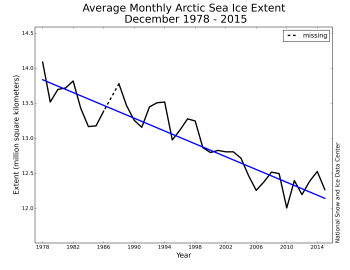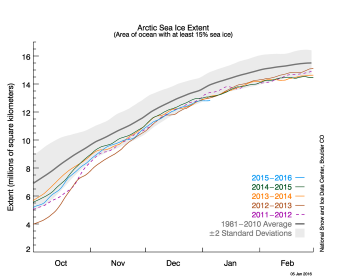December ended with Arctic sea ice extent tracking between one and two standard deviations below average, as it did throughout the fall. This caps a year that saw the lowest sea ice maximum in February and the fourth lowest minimum in September. In Antarctica, December sea ice extent was slightly above average but far below the exceptionally large ice extents recorded for December 2013 and 2014. A slow-down in the rate of Antarctic sea ice growth in July was followed by near-average extents in the subsequent months. The first week of 2016 has seen very slow ice growth in the Arctic.
http://nsidc.org/arcticseaicenews/files/2016/01/Figure3-350×270.png

http://nsidc.org/arcticseaicenews/files/2016/01/Figure21-350×280.png

Note: The rapid drop in ice cover in the early days of the New Year. Could this be the result of the Frank cyclone that clobbered the US late in December, then moved into the N. Atlantic and Europe? See “N Pole temperature anomaly” post, below.